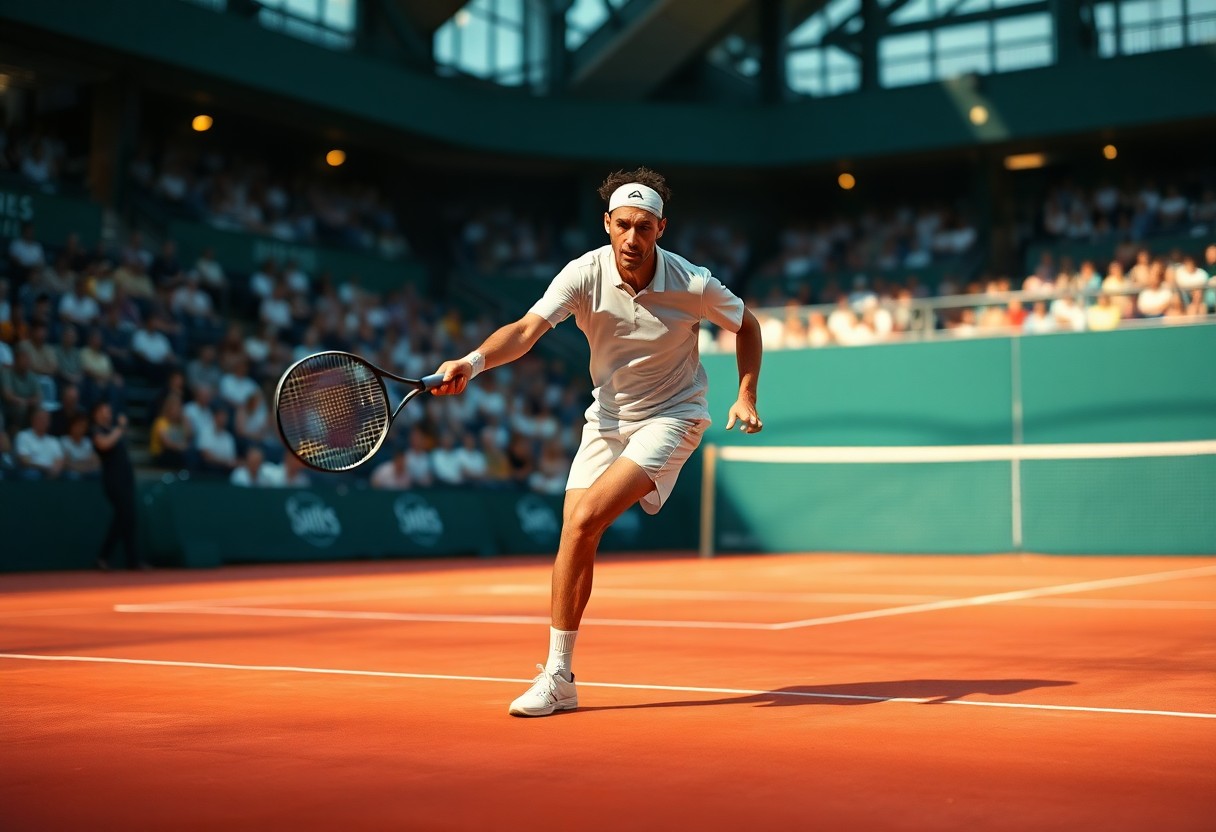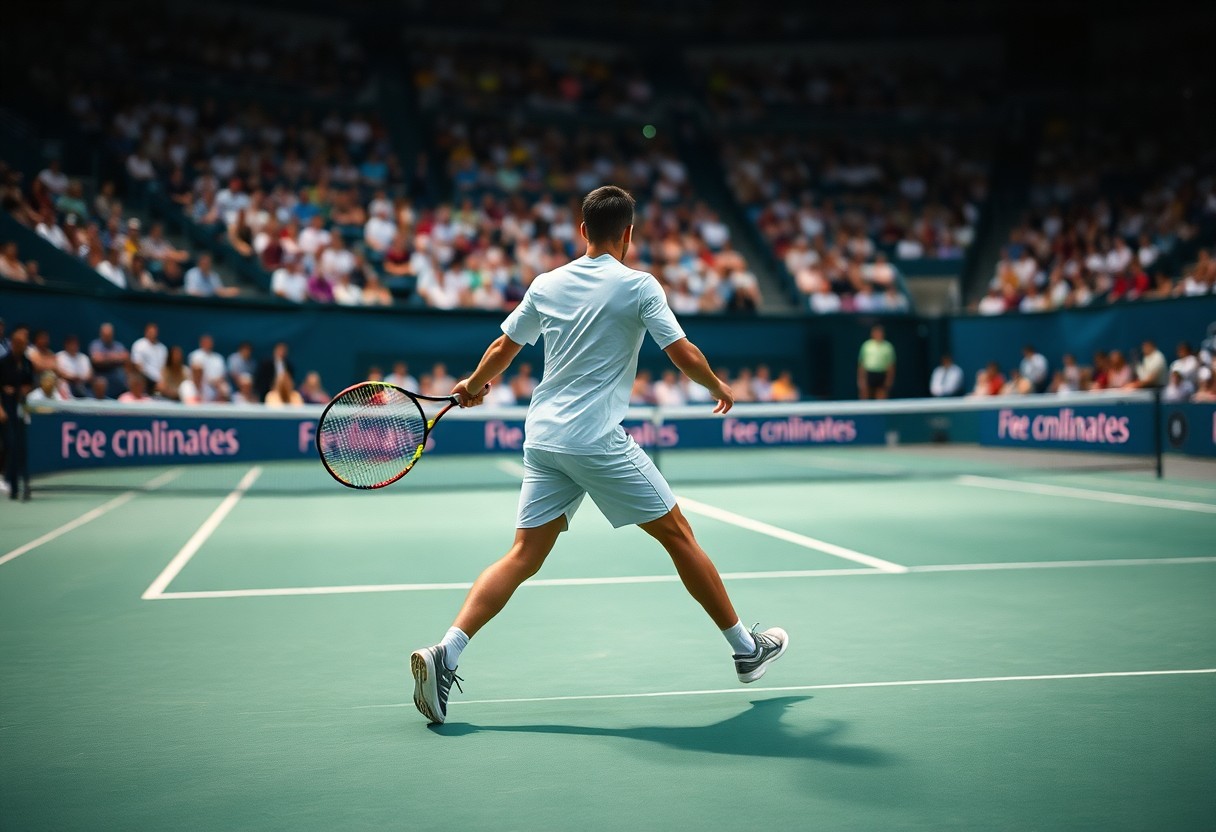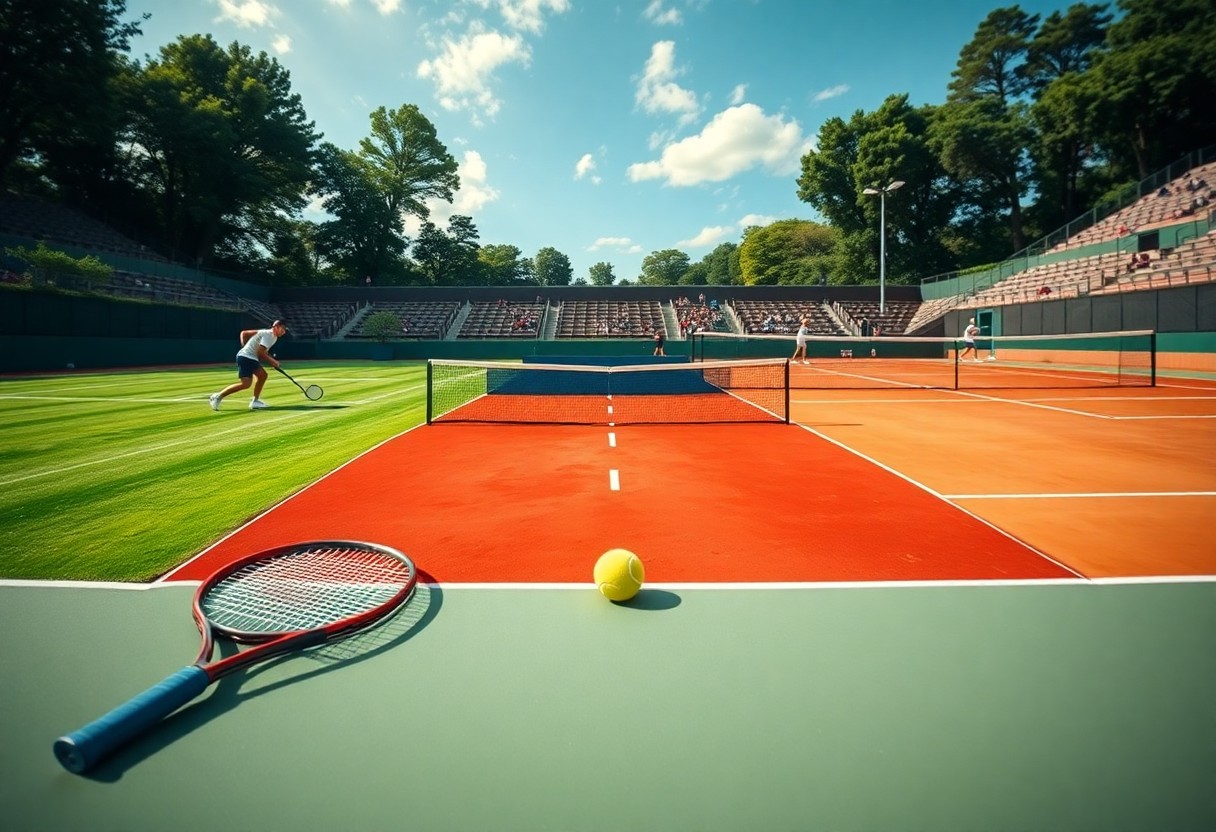With a solid understanding of tennis footwork fundamentals, you can dramatically improve your performance on the court. This blog post will explore key techniques used by the world’s elite tennis players, allowing you to enhance your agility, balance, and overall court coverage. As you dive deeper into these vital movements, you’ll learn how to position yourself effectively, making it easier to respond to various shots and maintain control throughout your matches. Get ready to elevate your game by mastering the footwork that sets champions apart!
The Importance of Footwork in Tennis
For successful tennis players, footwork is an necessary component that can dramatically influence performance on the court. Effective footwork allows you to reach the ball quickly, maintain your balance, and position yourself optimally for each shot. By prioritizing and refining your footwork skills, you can enhance your overall game and give yourself the best chance to outmaneuver your opponent.
Enhancing Speed and Agility
Beside improving your overall movement on the court, enhancing your footwork will significantly increase your speed and agility. By practicing dynamic footwork drills, you’ll not only boost your reaction time but also develop better coordination. This agility allows you to chase down balls with ease, positioning yourself ahead of your opponent, and creating opportunities for more powerful strokes.
Improving Shot Accuracy
Enhancing your footwork also plays a pivotal role in improving shot accuracy. A solid foundation with quick, precise foot movements enables you to set up properly for each stroke, ensuring that your timing and balance are on point. This precision in positioning directly translates to more consistent and powerful shots.
Another important aspect of footwork in enhancing shot accuracy is the ability to adjust your stance and positioning quickly. When you are able to move efficiently and get into the right place, your body can naturally align with the ball, promoting better energy transfer during your shot. This focused positioning can significantly reduce errors, allowing you to hit more targeted shots and consistently place the ball where you intend. Pay attention to your footwork, and you’ll see an impressive boost in your game!
Basic Footwork Techniques
It is vital to master the basic footwork techniques to improve your overall performance on the court. With these foundational skills, you can move more efficiently, react quickly to your opponent’s shots, and maintain better balance during your rallies. Understanding and practicing these techniques will set you on the path to playing like the world’s best players.
The Split Step
Between every point, the split step is a fundamental move that prepares you to respond swiftly to your opponent’s next shot. By slightly bending your knees and jumping, you achieve a balanced stance that allows you to explode in any direction as soon as your opponent makes contact with the ball. This technique not only enhances your reaction time but also helps you anticipate the shot more effectively.
Lateral Movement
Across the court, lateral movement plays a significant role in positioning yourself for optimal shot execution. Efficient lateral movement allows you to cover the entire court, reaching wide balls without losing balance. By staying low and using short, quick steps, you can adjust to your opponent’s shots while maintaining the necessary balance to strike effectively.
Further enhancing your lateral movement is key to dominating the game. Focus on staying light on your feet and pushing off with your outer foot during transitions. Practicing quick, sideways steps will help you develop a strong foundation, enabling you to swiftly adjust to any trying situation on the court. By mastering this skill, you will find it easier to respond to different ball trajectories, ultimately leading to more success in your matches.
Advanced Footwork Strategies
All elite tennis players leverage advanced footwork strategies to elevate their game. These strategies enhance your ability to cover the court efficiently and position yourself perfectly for every shot. Key techniques include:
| Technique | Description |
|---|---|
| Split Step | Initiate movement as your opponent strikes the ball. |
| Side Shuffle | Maintain lateral balance while anticipating shots. |
| Crossover Steps | Cover the court quickly when reaching wide shots. |
Approaching the Net
Among the techniques to master, approaching the net effectively is imperative for advanced players. You should use a combination of timing, precision, and footwork patterns to close the distance on your opponent. Utilize your split step to prepare for the volley, ensuring you’re balanced and ready to react quickly.
Recovery Steps
Steps you take after hitting a shot are vital for maintaining your position on the court. You must develop strong recovery steps that set you up for the next play. Efficient footwork allows you to quickly reset and be ready for your opponent’s response.
Footwork is fundamental in maintaining your balance and positioning to counter your opponent’s shots effectively. Smart recovery steps help you regain optimal court positioning and avoid getting caught flat-footed. By practicing consistent, quick movements, you ensure you can respond to unpredictable plays while minimizing the risk of overextending yourself and creating openings for your opponent. Prioritize incorporating advanced recovery strategies into your routine, enhancing your overall performance on the court.
Drills to Improve Footwork
Not all footwork drills are created equal; some are more effective than others in enhancing your agility and movement on the court. Integrating targeted exercises into your training regimen can make a significant difference. Focus on incorporating drills that challenge your foot speed, coordination, and balance. By consistently practicing these drills, you will develop the foundation needed for swift and efficient footwork.
Footwork Ladder Drills
Before you start with footwork ladder drills, ensure you have a sturdy ladder placed flat on a surface. These drills focus on quick foot placements, agility, and rhythm. As you progress through various patterns, you will refine your foot speed and quickness, which are imperative for effectively covering the court during a match.
Cone Drills
The cone drills are designed to enhance your lateral movement and agility. By setting up cones in various formations, you can practice changing direction quickly and maintaining your balance while accelerating towards the ball. This practice will not only improve your footwork but also contribute to your overall court awareness.
Understanding the benefits of cone drills can transform your footwork training. They promote quick direction changes, engage different muscle groups, and encourage dynamic movement patterns. You can utilize various setups, such as zig-zag or T-shapes, to simulate game-like scenarios. By incorporating these drills regularly, you will cultivate enhanced agility and strengthen your stability, allowing you to respond effectively to your opponent’s shots. The result is a solidified foundation that can elevate your overall performance on the court.
Analyzing the Footwork of Top Players
Once again, the significance of footwork in tennis cannot be overstated. By closely observing the footwork of top players, you can identify key techniques that contribute to their on-court success. These athletes exhibit remarkable agility, balance, and efficiency, allowing them to respond effectively during intense rallies. You will gain valuable insight into how professional players position themselves, maneuver around the court, and maintain stability during powerful strokes.
Case Studies of Elite Athletes
Behind every elite athlete lies a foundation of tailored footwork strategies. Analyzing their performance provides examples of how effective footwork can shape your game.
- Novak Djokovic – Exhibits exceptional lateral movement and split-step timing, achieving a 80% win rate while using precise positioning.
- Rafael Nadal – Renowned for his incredible balance and high-intensity footwork which helped him secure 13 French Open titles with a 94% clay court success rate.
- Serena Williams – Demonstrates powerful, explosive footwork, allowing her to cover the court efficiently and win 73% of matches in major tournaments.
- Roger Federer – Utilizes fluid footwork with expert anticipation, boasting nearly 90% of points won on serve during his prime years.
Common Strategies Among Champions
Champions often employ similar footwork strategies that result in effective court coverage and improved shot accuracy. You’ll notice that they prioritize maintaining a low center of gravity, engage in quick pivots, and utilize the split-step technique to facilitate their movement. This combination allows for rapid direction changes while remaining balanced.
Analyzing how top players excel at footwork highlights their mastery in maintaining court positioning and timing. Focus on adjusting your own footwork to incorporate elements like quick adjustments, maintaining an athletic stance, and employing the split-step effectively. These aspects ensure you remain agile and ready to exploit your opponent’s weaknesses, giving you an edge in matches.

Common Footwork Mistakes to Avoid
Now that you’re familiar with key footwork techniques used by the pros, it’s vital to pinpoint common mistakes that can hinder your game. By actively avoiding these pitfalls, you can enhance your movement on the court, ensuring you’re ready for every shot and play. Focusing on these errors will pave the way for better performance and increased confidence in your footwork.
Overreaching
Before making a move for the ball, assess your positioning. Overreaching can lead to poor shot execution and increased risk of injury. It’s vital to maintain your balance and make controlled movements to avoid compromising your stability on the court.
Poor Balance
Before striking the ball, ensure that your weight is distributed evenly. Poor balance can prevent you from executing powerful shots and responding effectively to your opponent’s movements. A strong foundation is key to maximizing your performance.
Consequently, maintaining good balance during your matches enables you to stay agile and responsive. When you find yourself off-balance, it becomes challenging to reach the ball quickly or return it effectively, resulting in missed opportunities. Focus on planting your feet properly and keeping your center of gravity low to achieve a stable base. This approach not only improves your shot accuracy but also lessens the risk of injuries, allowing you to play stronger and longer in matches.
Conclusion
Following this exploration of tennis footwork fundamentals, you now understand the necessary techniques used by the world’s best players. By focusing on your balance, agility, and positioning, you can enhance your overall performance on the court. Implementing these footwork strategies will allow you to move more efficiently, react quickly to your opponent’s shots, and ultimately elevate your game to the next level. Embrace these principles and watch as your skills improve, making you a more formidable competitor.




